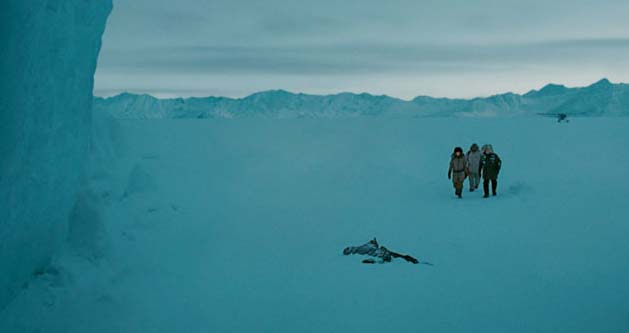Movie 'Whiteout' Gets Antarctic Science Right

At the bottom of the world, a lone U.S. marshal has to investigate the first murder in Antarctica. That is the dramatic concept behind the film "Whiteout," starring Kate Beckinsale as the marshal Carrie Stetko.
The extremes the characters face in "Whiteout," which opens Friday, might seem like Hollywood fantasy, but it turns out the writer behind the original story made sure it was grounded in fact as much as possible.
"Antarctica is a fantastic location, and setting a story there is like setting a story on the International Space Station — it's an environment so rich, you cannot possibly not tell a story there," said Greg Rucka, who wrote the original Eisner Award-winning story that the film is based on. "It might as well be an alien world."
The movie trailer claims that temperatures in Antarctica can reach 120 degrees below zero. If anything, this is an understatement — the lowest temperature recorded on this harshest continent was -129 degrees F, at Vostok Station in 1983.
"Everything we take for granted is just a million times harder," Rucka told LiveScience. "Like going outside — you need five to 10 minutes just to suit up and go outside, and even if you did everything right, the experience could still prove deadly."
The movie trailer also said that winds at Antarctica can gust at more than 200 mph. As exaggerated a claim as this seems, it is in fact true. Antarctica holds the record among continents for sustained wind speeds.
Why are the winds of Antarctica so powerful? The continent's interior is a high plateau covered with thick ice, which cools the air above it. As this extremely cold, dense air sinks, it can get funneled through rugged channels in the ice and rock to become ferocious, deadly gusts called katabatic winds that howl toward the coast of Antarctica.
Get the world’s most fascinating discoveries delivered straight to your inbox.
The whiteouts after which the story and film are named, where sudden blizzard-like conditions reduce visibility to just inches, are all too real as well.
"You can die 5 feet away from the place you wanted to get to because you didn't clip yourself onto a guide line and the winds came up, and you thought you were headed in the right direction and then realized you weren't, and then you have no point of reference as to where to go," Rucka said. "I'm not making that up — there are factual accounts like this."
All this harsh weather can very quickly exact a dreadful toll on characters in "Whiteout" in a way that might shock viewers, but this holds true to life as well. For example, an early Antarctic explorer, Apsley Cherry-Garrard, had most of his teeth shatter due to the extreme cold.
"The frostbite issue presented in both the film and the original story is absolutely 100 percent accurate," Rucka said. "When you have cases where extremities are frozen, then thawed, then frozen again, and that's a quick way to gangrene. People even today come back from the ice with missing toes, fingertips, tips of noses."
Rucka did admit he took some artistic license when developing his story — the premise of having a U.S. marshal posted down in Antarctica, for instance.
"The federal marshals are involved down there, but only in the fact that the station manager is deputized by the marshal service," Rucka said. "So I admit I took liberties there. I wanted to have a sheriff in the Old West sense, because in a way this is an Old West story, so a marshal was perfect."
However, scientific activities such as looking for meteorites or digging for core samples as seen in the film and story are quite real. Antarctica is actually one of the best places on Earth to look for meteorites that originated on Mars or the moon, because the ice helps keep them in pristine condition. And core samples taken from the ice can hold cosmic dust and ancient ferns that shed light on Earth's climate.
"I love what it says about the human spirit that we continue to go there and work there and live there. I love the pioneer element inherent there," Rucka said. "I've looked at all these pictures of Antarctica over the years, and I don't think I've ever seen anything as beautiful as that elemental place."



